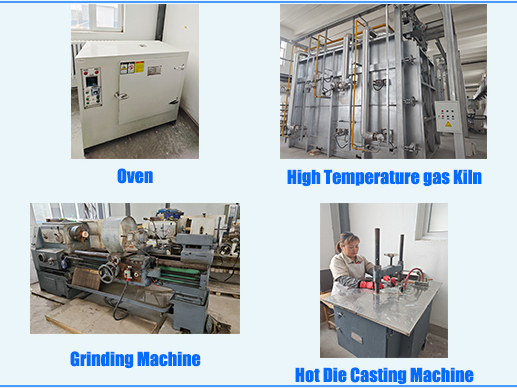Why does alumina industrial ceramic tube deform during use?
Alumina ceramic, also known as alumina or aluminum oxide (Al2O3), is an alumna industrial ceramic known for its extreme hardness and high thermal conductivity. The properties of alumina ceramics make them one of the most widely used ceramics for structural, wear, and corrosive environments. Alumina ceramics are typically manufactured from bauxite and can be shaped using injection molding, die pressing, isostatic pressing, slip casting, diamond machining, and extrusion. Like aluminum nitride and other important engineering materials, alumina can be produced by dry press and sinter or by hot pressing using appropriate sintering aids. Alumina-based ceramics are one of the most studied and characterized advanced ceramic materials known today. Due to the important combination of properties, their behavior has been thoroughly researched. Alumina is characterized by high hardness, excellent resistance to corrosion, thermal stability, good dielectric properties (for converting from DC to GHz frequencies), low loss tangent, and stiffness. See the next section for more details on the properties of alumina industrial ceramic materials.
The reasons for deformation of alumina industrial ceramic tubes may include the following:
1. Uneven force application during installation. If the pipeline is subjected to uneven pressure during installation, it will lead to excessive local stress, thereby causing deformation.
2. Significant temperature variations during service. If there is uneven heating with an inconsistent temperature gradient distribution during the tube's service life, thermal stress will be generated on the inner and outer surfaces of the tube, which may cause the pipe to deform. It is necessary to control the heating rate and temperature distribution.
3. Operating pressure exceeding the design value. If the actual operating pressure exceeds the design pressure, the excessive or uneven external force borne by the tube during service may also cause deformation. Insufficient tube strength will also lead to deformation.
4. Quality issues. If the tube fittings themselves have problems such as defects or improper material proportioning, it will also reduce their strength and lead to deformation.
5. Environmental corrosion. If there are changes in the service environment, such as extreme pH levels or high-temperature corrosion, it will also affect the strength and stability of the tube.
6. Excessive dynamic loads. If the tube is subjected to excessive dynamic loads such as water hammer, vibration, or pulsation, it may also gradually deform.
Therefore, these factors should be fully considered during design, installation, and service. By controlling wear corrosion, temperature variations, and static/dynamic loads, as well as conducting regular inspections and prevention measures, the deformation of alumina industrial ceramic tubes can be effectively prevented.


